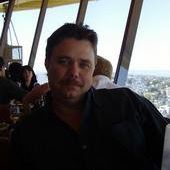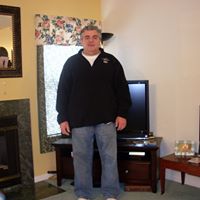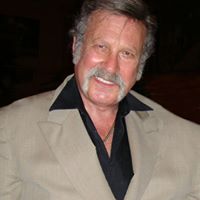Robert William Ladner
age ~52
from Gulfport, MS
- Also known as:
-
- Robert W Ladner
- Bobby Ladner
Robert Ladner Phones & Addresses
- Gulfport, MS
- Navarre, FL
- Long Beach, MS
- Torrance, CA
- Ventura, CA
- Lawndale, CA
- Pass Christian, MS
- 24 Ryan Cir, Long Beach, MS 39560 • 2289903420
Work
-
Position:Service Occupations
Education
-
Degree:Associate degree or higher
Us Patents
-
Binding Peptides For Carcinoembryonic Antigen (Cea)
view source -
US Patent:7438890, Oct 21, 2008
-
Filed:Jan 26, 2005
-
Appl. No.:11/045477
-
Inventors:Isaac J. Rondon - San Francisco CA, US
Robert Charles Ladner - Ijamsville MD, US -
Assignee:Dyax Corp. - Cambridge MA
-
International Classification:A61K 38/00
A61K 38/04
A61K 38/08
A61K 38/10
A61K 38/12
A61K 49/00
A61K 51/08
C07K 4/00
C07K 7/00
C07K 7/04
C07K 9/00
C07K 11/00 -
US Classification:424 169, 424 91, 424 934, 436 64, 514 2, 514 13, 514 14, 514 15
-
Abstract:The present invention provides binding moieties for CEA, which have a variety of uses wherever detecting, isolating or localizing CEA, and particularly CEA as opposed to cross-reactive antigens such as NCA, is advantageous. Particularly disclosed are synthetic, isolated polypeptides capable of binding CEA, which is overexpressed in adenocarcinomas of endodermally derived digestive system epithelia and fetal colon. Such polypeptides and disclosed derivatives are useful, e. g. , as imaging agents for CEA-expressing tumors.
-
Inhibitors Of Dutpase
view source -
US Patent:20110212467, Sep 1, 2011
-
Filed:Aug 27, 2009
-
Appl. No.:13/061068
-
Inventors:Robert D. Ladner - Santa Monica CA, US
Nouri Neamati - Fullerton CA, US -
Assignee:UNIVERSITY OF SOUTHERN CALIFORNIA - Los Angeles CA
-
International Classification:G01N 33/573
C12N 5/09
C07D 261/16
C07D 417/12
C07D 285/125
C07D 473/04 -
US Classification:435 78, 435375, 548245, 548171, 548136, 544266
-
Abstract:Evidence demonstrating that elevated expression of dUTPase protects breast cancer cells from the expansion of the intracellular uracil pool, translating to reduced growth inhibition following treatment with 5-FU is provided. The implementation of in silica drug development techniques to identify and develop small molecule inhibitors of dUTPase are reported. As 5-FU and the oral 5-FU pro-drug capecitabine remain central agents in the treatment of a variety of malignancies, the clinical utility of a small molecule inhibitor to dUTPase represents a viable strategy to improve the clinical efficacy of these mainstay chemotherapeutic agents.
-
Novel Fluorescence-Based Assay For The Rapid Detection And Quantification Of Deoxyribonucleoside Triphosphates
view source -
US Patent:20130029331, Jan 31, 2013
-
Filed:Jun 14, 2012
-
Appl. No.:13/523782
-
Inventors:Peter M. Wilson - Pasadena CA, US
Robert D. Ladner - Santa Monica CA, US -
Assignee:UNIVERSITY OF SOUTHERN CALIFORNIA - Los Angeles CA
-
International Classification:G01N 21/64
C07H 21/00 -
US Classification:435 611, 536 231, 534727
-
Abstract:The inventors have developed a rapid and sensitive fluorescence-based assay to quantify dNTPs. This assay relies on the principle that incorporation of a limiting dNTP is required for primer-extension and polymerase-mediated 5-3′ exonuclease hydrolysis of a quenched fluorophore-labeled probe resulting in fluorescence. The concentration of limiting dNTPs is directly proportional to the fluorescence generated. This assay has important applications in research that investigates the influence of pathological conditions or pharmacological agents on dNTP biosynthesis and regulation.
Name / Title
Company / Classification
Phones & Addresses
President
Ladner Coatings Inc
Construction · Trade Contractor · Concrete Repair · Stamped Concrete · Deck Cleaning · Decks · Concrete Driveway · Epoxy Flooring
Construction · Trade Contractor · Concrete Repair · Stamped Concrete · Deck Cleaning · Decks · Concrete Driveway · Epoxy Flooring
8372 Monroe Ave, Stanton, CA 90680
7148168711
7148168711
Principal
Realhand Construction Limited Liability
Single-Family House Construction
Single-Family House Construction
2303 Frontera St, Gulf Breeze, FL 32566
President
LADNER THERAPEUTICS, INC
Business Services at Non-Commercial Site · Nonclassifiable Establishments
Business Services at Non-Commercial Site · Nonclassifiable Establishments
2950 Neilson Way STE 305, Santa Monica, CA 90405
ManagingSecretary, President
Realhand Constuction Limited Liability Company
2303 Frontera St, Gulf Breeze, FL 32566
Resumes

Robert Ladner
view sourceWork:
Pr Marketing Group

Pipefitter Foreman
view sourceWork:
Pipefitter Foreman

Robert Ladner
view source
Robert Ladner
view source
Robert Ladner
view source
Robert Ladner
view source
Robert Ladner
view source
Viral Autobots Review
view sourceIndustry:
Human Resources
Work:
Viral Autobots
Viral Autobots Review
Viral Autobots Review
License Records
Robert Derwood Ladner
Address:
158 Central Ave, Long Beach, MS
License #:
0438 - Expired
Category:
Architecture
Issued Date:
Mar 18, 1959
Expiration Date:
Nov 30, 1987
Googleplus

Robert Ladner

Robert Ladner

Robert Ladner

Robert Ladner

Robert Ladner
Youtube
Myspace
Flickr
Classmates

Robert Ladner
view sourceSchools:
St. Rita Grammar School Chicago IL 1950-1954
Community:
Robert Foley, Anna Poluha, Merita Ryan

Robert Ladner
view sourceSchools:
Onaga High School Onaga KS 2002-2006
Community:
Kenneth Graf, John Enloe, Jeremy Connolly, Patrick Janssen, Ashleigh Douglas, Taylor Mabe, Chance Wesley, Carly Flattery, Travis Fager, Frankie Suther

Robert Ladner | St. Stani...
view source
Robert Ladner, Topeka Wes...
view source
St. Rita Grammar School, ...
view sourceGraduates:
Robert Ladner (1950-1954),
John Foy (1939-1943),
Olivia Tostado (1988-1991),
Karen Sostek (1958-1966),
Brian Hansen (1982-1987),
James Koch (1963-1964)
John Foy (1939-1943),
Olivia Tostado (1988-1991),
Karen Sostek (1958-1966),
Brian Hansen (1982-1987),
James Koch (1963-1964)

Robert Ladner
view source
Robert Ladner
view source
Robert Ladner
view source
Robert Ladner
view source
Robert Ladner
view source
Robert Ladner
view source
Robert Ladner
view source
Robert Ladner
view sourceGet Report for Robert William Ladner from Gulfport, MS, age ~52













